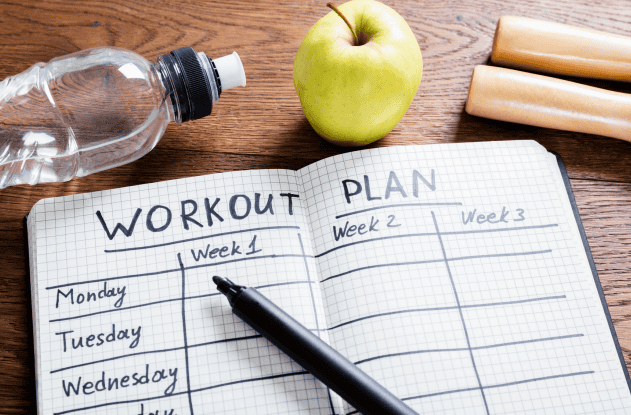When designing a workout routine, it’s important to keep several key factors in mind. Striking the right balance between strength and cardio, setting clear fitness goals, and incorporating various types of strength training are all essential elements. A well-rounded workout plan is crucial for achieving your fitness objectives, no matter what they are. This post will guide you through the process of creating a balanced workout plan that will keep you motivated, healthy, and on track.
1. Identify Your Fitness Goals
Before you start exercising, it’s important to set specific fitness goals. Whether you’re aiming to lose weight, build muscle, or improve endurance, having clear objectives helps you stay focused. Goals should be SMART: Specific, Measurable, Achievable, Relevant, and Time-bound. For example, a SMART goal might be, “I want to lose 5 pounds through diet and exercise in one month.”
2. Balance Strength and Cardio
To maximize your overall health, it’s essential to balance strength training and cardio in your routine. Strength training helps you build and maintain muscle, while cardio improves heart health, burns calories, and enhances endurance. For optimal fitness, aim for 3-4 strength training sessions and 2-3 cardio workouts each week.
3. Incorporate Different Types of Strength Training
Strength training isn’t one-size-fits-all. To keep your body in top condition, incorporate a variety of strength training techniques:
– Compound movements: Exercises like squats and bench presses engage multiple muscle groups, boosting overall strength.
– Isolation exercises: These target specific muscles to promote muscle growth, such as bicep curls or leg extensions.
– Bodyweight exercises: Push-ups, squats, and lunges are effective for all fitness levels and require no equipment.
4. Add Flexibility and Mobility Work
Flexibility and mobility are key components of a balanced workout routine. Include exercises that improve joint mobility and muscle flexibility, such as yoga, dynamic stretches (e.g., leg swings), and static stretches (e.g., hamstring stretches). Dedicate at least 10-15 minutes at the end of each workout for stretching and mobility work to aid in recovery and prevent injuries.
5. Rest and Recovery
Adequate rest is just as important as exercise for achieving high performance and avoiding injury. Overtraining can lead to fatigue, injury, and burnout, while proper recovery allows your muscles to repair, grow, and get stronger. Plan for 1-2 rest days per week and focus on low-impact activities like walking, yoga, or light stretching on these days to stay active while allowing your body to recover.
6. Mix Up Your Routine
To prevent boredom and keep your muscles challenged, change your workout routine every 4-6 weeks. This can be as simple as varying the number of repetitions or switching to different exercises. Keeping your workouts fresh helps to avoid plateaus and makes it easier to stay motivated.
7. Track Your Progress
Results don’t happen overnight, so tracking your progress is the best way to stay consistent with your routine and goals. Use a fitness journal or app to record your workouts, including weights lifted, reps performed, distances covered, and any changes in body measurements. Tracking progress helps you stay accountable so that you can see how far you’ve come.
8. Listen to Your Body
Learning to listen to your body is crucial for long-term fitness success. Pay attention to signs of fatigue, discomfort, or pain. If something feels off, slow down, take a break, or adjust your workout accordingly. Prioritize rest and recovery when needed, and don’t hesitate to opt for light activities like stretching or walking if you’re feeling tired or sore.
Conclusion
Building a balanced workout plan requires consistency, variety, and attention to your body’s needs. By combining strength training, cardio, flexibility exercises, and proper rest, you’ll be well on your way to achieving your fitness goals. With a well-rounded routine, you’ll not only improve your physical fitness but also enhance your overall health, well-being, and mental clarity.

